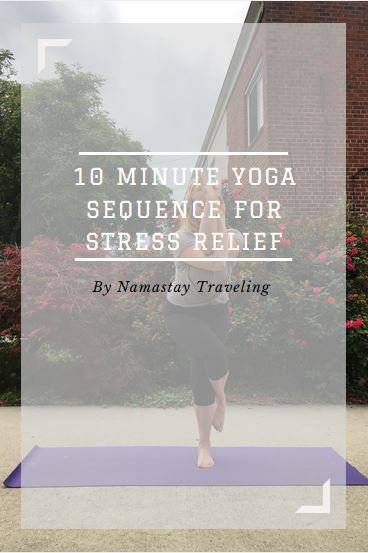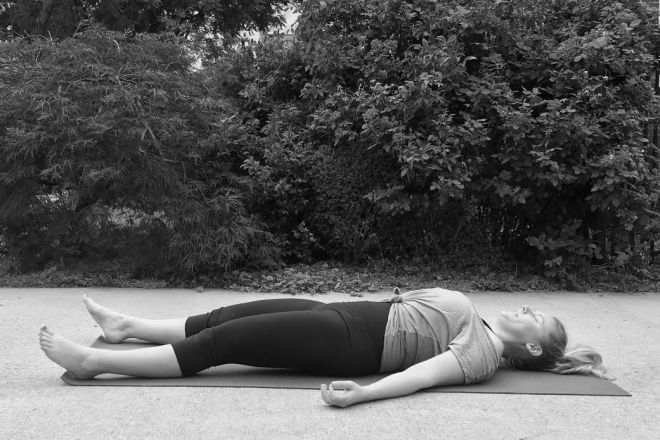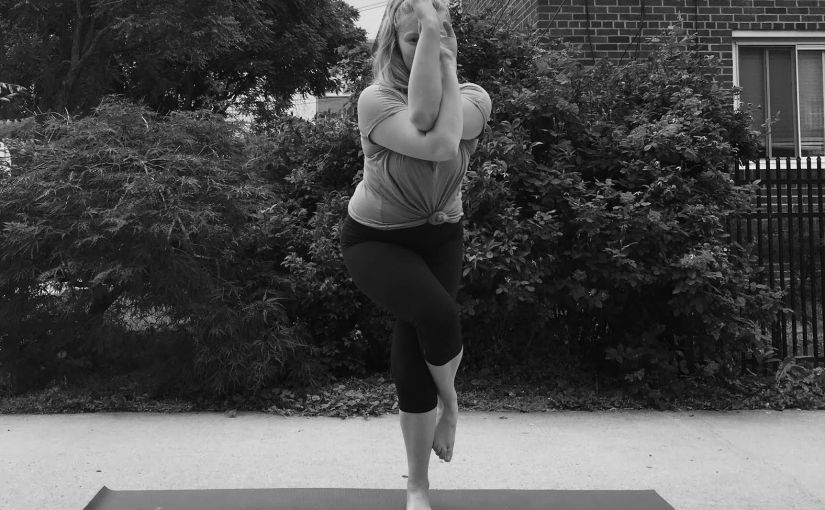
As we talked about earlier, yoga is more than asanas, the physical poses. While building strength in warrior I and defying gravity in headstand is awesome, it’s not the only reason people keep coming back for more. The empowerment and inner-peace you carry off of your yoga mat is what matters most. As always, consult with your doctor before participating in a new workout. While I’m a certified yoga teacher, respect your body and don’t push into positions that feel sharp or painful beyond the level of discomfort.
Now it’s time for the juicy stuff. Here are my top five poses to not only help you handle the stress you have, but prevent it from coming back. Ever.

Oh yeah. Right into the good stuff. Child’s pose is golden on its own or in the middle of a sequence. In addition to being awesome for the nervous and lymphatic systems, child’s pose is a calming posture that helps quiet the mind, which in turn eases stress and gently releases pressure in the back. My favorite way is to keep the knees wide, let your belly drop down as you push your butt towards your heels. Your arms can be extended long with the elbows for a more active pose, or hand can lay down next to your heels to rest the shoulders.

Extended Puppy Pose is a great follow-up to child’s pose. Often times when too much is on our plate, we unknowingly tense our shoulders and totally abandon our posture. Not only does this crunch our midsection making it more difficult to breath, It also lower our confidence and strains our necks. Puppy pose reverses this damage. It releases the shoulders, where we hold our tension and our stress and lengthens our core to stretch the abdomen, helping us to keep this position when sitting upright. Push up into table top from child’s pose, keep your hips high as you lower your chest and chin down to the mat and walk your arms our straight ahead of you. Having your chin on the mat allows for a deeper shoulder stretch, but you can modify by placing your forehead on the ground instead for a less intense version.

The first time I did rabbit pose, I hated it. Knees pushed into my chest, top of my head crunched, difficulty getting air. The things that dreams are made of, right? No. But that’s the point. Rabbit pose teaches you to breath in tight spaces, to find comfort in being uncomfortable, which ultimately builds up your endurance in handling anxiety-causing situations. The longer you’re able to stay in the posture which brings on feelings of stress, the more you’re able to recognize it and turn inward to bring your anxiety back down. So the next time you’re boss is reaming you out and you feel like you’re suffocating, find ease in knowing that you’ve already practiced how to breath in distressing situations like this. From puppy pose, make your way back to child’s pose and reach your hands around to grab your heels. Place the top of your head on the mat with your forehead touching, or close to touching you knees. Gripping firmly to your feet, lift your hips up towards the sky. Hold for five to eight breaths, lower, and then repeat.

Eagle pose dependent on one’s concentration and balance, eagle pose forces us to focus on a single object, such as a point on the wall, in order to stay upright. This pose lends itself for when we are boggled down with a million things on our minds, in turn causing us to treat each task individually rather than drowning in to-dos. It teaches us to appreciate the single moment and not to plan for those ahead or worry about those behind. In addition, it also opens up the shoulders, upper back and hips, which can all carry tension unknowingly. To get started, plant down your left foot into the earth and slightly bend both your knees. Bring your right knee up over your left knee. You can double bind with the right ankle around the left calf, but it’s not necessary for the benefits. Right elbow comes underneath left elbow, palms of your hands together. Square your hips to the front of your mat and engage your core to prevent your butt from sticking out. Gaze to a spot in front of you to keep your balance. There’s also the option to take eagle post on your back as a modification.

Savasana, perhaps surprisingly one of the more difficult poses, considering we’re so used to being go go go that we can’t just be. By placing one hand on your belly and one hand on your chest, you connect to your breath and recognize the control you have over it. When we’re worried or overwhelmed, we’re like to shorten our inhales and exhales. With a hand over your belly, you can be sure to breath in deeply, hold, and then release. By altering the physical response (hyperventilating), we can change our emotional one (stressed). To get into savasana, lay on your back and let you feet fall to the sides. Scan your body from head to toe, surrendering to the position and letting go of any tension you feel (I often unknowingly flex my quads or neck instead of letting them hang heavy). And then, thank your body for carrying you through this practice and promise to come back to your mat the next time you feel your stress rising. Inhale peace, and exhale gratitude. Namaste.
YOGA UPDATES! Are you in the Washington, D.C. area? Do you have a pre-teen or teen that could benefit from practicing mindfulness and yoga (aka all of them!)? I’m offering a pre-teen to teen yoga summer camp at Your Life Energy that will focus on building strength, balance, flexibility and healthy habits for when kids need it most! Find out more info here.
Are you convinced yet? How has yoga improved your stress and overall well-being?
xx,
Juliette

